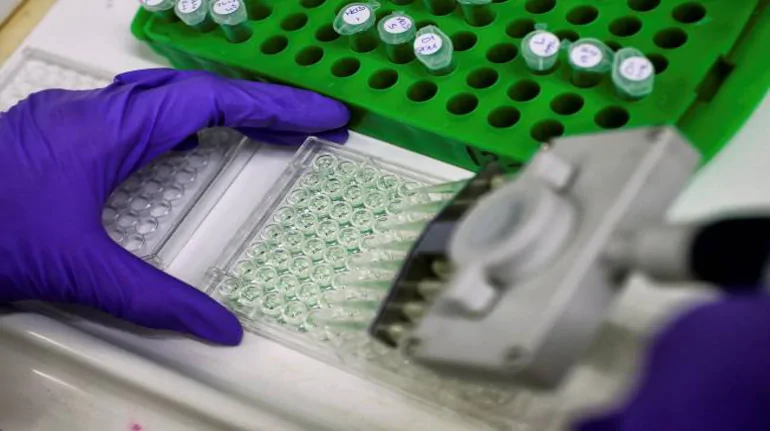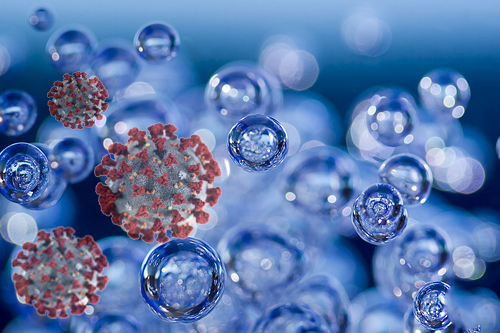How Ozone can neutralize Corona Virus
- How Ozone can neutralize Corona Virus Click Here...
- Japan Study on ozone neutralize corona Click Here...

Ozone vs UV(air and water)
Comparison of UV vs Ozone In Air Treatment
| ULTRA VIOLET (UV) | OZONE |
| The energy is not enough to destroy all types of bacteria, virus, protozoa, and fungus. | Mercilessly kills all bacteria and virus. |
| Requires more contact time as the UV rays is stationery & hence air not coming in contact cannot be treated | The reaction is instantaneous as the gas mixes in whole area. |
| Cannot eliminate algae & biofilms. | Eliminates algae & biofilms. |
| Cannot kill SPORES of bacteria & virus | Eliminates even SPORES. |
| Does not eliminate ODOR. | Eliminates ODOR. |
| UV light cannot increase or decrease energy | Ozone can be increased or decrease to desired level for effective treatment of water |
| The Intensity of the bulbs start reducing | Intensity can not waver once fixed. |
| No reduction in operating cost for AHU/HVAC | Savings in operating cost for AHU/HVAC |
| Can not store as SPORES will breed and bacteria will come alive. | Treatment is permanent. |
| Bulbs get fused often and required to be replaced often | No bulbs involved |
| Needs maintenance | No maintenance required |
| Traditional and old Technology | Upgraded and Latest Technology |
Comparison of UV vs Ozone In Water Treatment
| ULTRA VIOLET (UV) | OZONE |
| The energy is not enough to destroy all types of bacteria, virus, protozoa, and fungus. | Mercilessly kills all bacteria and virus. |
| Requires more contact time as the UV rays is stationery & hence air not coming in contact cannot be treated | The reaction is instantaneous as the gas mixes in whole area. |
| If the water is turbid & has high level of suspended solids, the penetration of the rays is not deep. | Reduces turbidity and the suspended dissolved solids do not make any difference. |
| Scale forms on the tube thereby reducing the disinfections rate. | Disinfections rate is constant and there is no scale formation. |
| Cannot eliminate algae & biofilms. | Eliminates algae & biofilms. |
| Cannot kill SPORES of bacteria & virus. | Eliminates even SPORES. |
| Does not act as flocculent. | Act as flocculent. |
| Does not eliminate ODOR. | Eliminates ODOR. |
| Does not eliminate COLOUR. | Eliminates COLOUR. |
| Cannot treat waste water. | Treats any type of water. |
| UV light cannot increase or decrease energy | Ozone can be increased or decrease to to desired level for effective treatment of water |
| The Intensity of the bulbs start reducing | Intensity can not waver once fixed. |
| Has very narrow application (Bacteria elimination only) | Has very narrow application (Bacteria elimination only) Has wide applications like eliminating bacteria, odor, color, treating waste water, effluent & so on |
| UV intensity can not be measured | Ozone presence can be felt. |
| Can not stop corrosion. | Stops corrosion completely |
| Can not store as SPORES will breed and bacteria will come alive. | Treatment is permanent. |
| Bulbs get fused often | No bulbs involved |
| Needs maintenance | No maintenance required |
| Has no effect on compounds | Oxidizes the compounds. |
Research on Ozone and Viruses
Links to research papers about viruses and gas-phase ozone disinfection :
- Ozone Can Be Used To Destroy The New Coronavirus And Disinfect AreasIn order to be safe, as we still do not really know how long these coronavirus can survive on surfaces...
- Ozone Disinfection of SARS-Contaiminated Areas The outbreak of SARS worldwide in March 2003 has increased people...
- Ozone Properties Why ozone?
- Advantages of Ozone What are advantages of ozone that helps to fight with all types of dieses in air?
- Effects of Ozone On Bacteria How ozone works effectively on different types of bacteria presence in air?
- Odor Destruction Using Ozone Millions of people enjoy odor free homes & apartments due to the safe use of ozone!
- Odor Destruction Using Ozone Millions of people enjoy odor free homes & apartments due to the safe use of ozone!
- Bacteria & Virus vs. Ozone PPM

Why Ozone?
The potential utility of ozone in the produce industry depends on the fact that as an oxidizing agent, it is 1.5 times stronger than chlorine and is effective over a much wider spectrum of microorganisms than chlorine and other disinfectants. Ozone kills bacteria such as Escherichia coli, Listeria, and other food pathogens much faster than traditionally used disinfectants, such as chlorine, and is free of chemical residues (Langlais et al., 1991; Sapers, 1998).
Ozone is a high-energy molecule. Its half life in water at room temperature is only 20 minutes, and it decomposes into simple oxygen with no safety concerns about consumption of residual ozone in the treated food product (Graham, 1997). It can also be used for recycling water (Anonymous, 1998; Perkins, 1997).
- About Ozone
- History Of Ozone
- Ozone Properties
- Formation of Ozone
- Advantages of Ozone
- Ozone Production In Nature
- Ozone Compatible Materials
- Polymer-Electrlyte-Membrane(PEM)
- Effects of Ozone On Bacteria
- Odor Destruction Using Ozone
- Ozone vs. Chlorine in Water
- Ozone Calculation, Conversions & Equations
- Ozone Disinfection/Ozone Contact Time Kinetics
- Ozone & Color Removal
- Ozone Application vs. Concentration
- Oxidizing Potential of Ozone
- How to Read an Injection Chart
- What is ORP
- Bacteria & Virus vs. Ozone PPM
